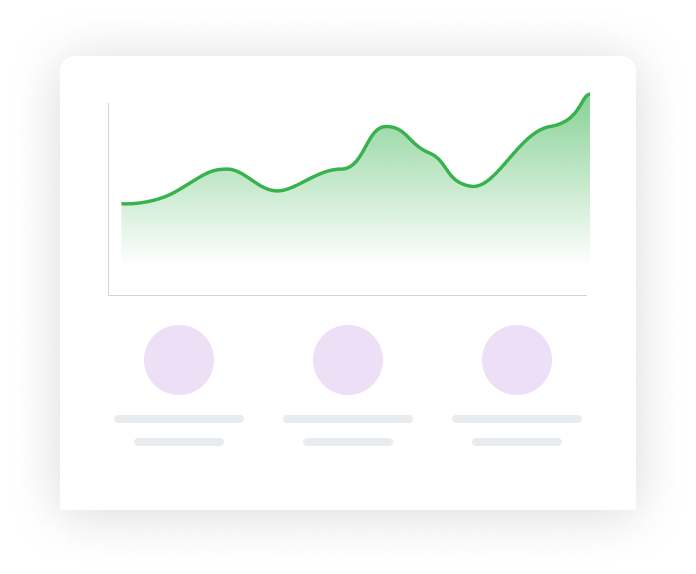Defining your brand identity
To create a compelling brand, start by defining your brand identity:

- Identify your target audience: Understand your ideal clients, including their demographics, preferences, and needs. This will help you tailor your services, marketing messages, and overall brand to resonate with them.
- Determine your unique selling proposition (USP): Identify what sets you apart from your competitors and why clients should choose your salon or barbershop. This can include factors such as specialty services, skilled staff, or a unique atmosphere.
- Establish your brand's mission and values: Define your business's purpose and the principles that guide your operations. Communicate these values through your marketing materials and in-store experience.
- Create a consistent brand aesthetic: Develop a visual identity that reflects your brand's personality, including logo, color palette, and typography. Ensure consistency across all online and offline touch points.
Building a strong online presence
A robust online presence is vital for attracting and retaining clients:
- Create a professional website: Invest in a user-friendly website that showcases your services, staff, and salon or barbershop atmosphere. Include essential information such as contact details, business hours, and online booking options.
- Utilize social media platforms:Develop a social media strategy to engage with your audience, share updates, and showcase your work. Encourage user-generated content and respond to comments and messages promptly.
- Manage your online reputation:Encourage satisfied clients to leave positive reviews on platforms such as Google, Yelp, and Facebook. Address negative feedback professionally and take necessary action to resolve any issues.

Optimizing Your Social Profiles

- Profile Picture: Upload a high-quality profile picture featuring your salon's logo or storefront. Ensure the image is clear and well-lit, and consider using a professional photographer for the best results.
- Compelling Bio: Write a brief description that outlines your services, unique selling points, and contact information. Use keywords relevant to your industry and location to help potential clients find your profile.
- Website Link: Add a link to your salon's website or online booking system in the bio section. Use a trackable URL to measure the traffic coming from your social profiles.
- Consistent Information: Ensure your salon's name, address, and phone number are consistent across both platforms. Update your information regularly to keep your audience informed about any changes.
Sharing Visually Appealing Content
- Consistent Presence: Post at least 3-5 times per week on each platform to maintain an active presence. Schedule posts during peak engagement times for your target audience.
- Content Calendar:Plan your posts in advance and ensure a mix of service highlights, team features, promotions, and educational content. Use a social media management tool, like Hootsuite or Buffer to schedule and manage your content calendar.
- Stories and Live Features:Utilize Instagram Stories and Facebook Live to provide followers with a behind-the-scenes look at your salon and share real-time updates. Create a content strategy for stories and live sessions, such as showcasing new products, giving styling tutorials, or hosting Q&A sessions with your stylists.

Creating a memorable in-store experience
Delivering an exceptional in-store experience can help turn first-time clients into loyal customers:

- Interior design and ambiance: Create a welcoming and comfortable environment that reflects your brand's aesthetic and values.
- Offer exceptional customer service: Train your staff to provide friendly, attentive service and ensure they are knowledgeable about your services and products
- Provide unique services and promotions: Offer specialty services or limited-time promotions to differentiate your business and encourage repeat visits.
- Implement a loyalty program: Reward your loyal clients with discounts, exclusive offers, or special perks to show appreciation and encourage repeat business.
Networking and community involvement
Build strong relationships within your community to increase brand awareness and attract new clients:
- Collaborate with local businesses and influencers: Partner with complementary businesses or influencers for cross-promotion and increased exposure.
- Participate in community events and fundraisers:Engage with your local community by sponsoring or participating in events, further establishing your brand presence.
- Offer workshops or educational events:Host events that share your expertise and provide value to your clients, such as styling workshops or product demonstrations.

Implementing targeted marketing strategies
Leverage various marketing tactics to reach your target audience and drive business growth:

- Email and SMS marketing campaigns: Build an email and SMS subscriber list, and send regular newsletters and text messages with updates, promotions, and valuable content.
- Content marketing: Create blog posts or videos that showcase your expertise and provide helpful tips to your clients
- Paid advertising on social media platforms: Utilize targeted ads on platforms like Facebook and Instagram to reach potential clients in your area.
- Local search engine optimization (SEO): Optimize your website and online presence to rank higher in local search results and attract more clients.
Monitoring and adjusting your brand strategy
Regularly evaluate the effectiveness of your brand strategy and make data-driven adjustments to improve results:
- Track performance metrics and gather customer feedback: Monitor key performance indicators (KPIs), such as website traffic, social media engagement, and sales data. Collect customer feedback through surveys or online reviews to gain insights into areas for improvement.
- Adapt your strategy based on data and market trends:Analyze your performance data to identify strengths and weaknesses in your brand strategy. Stay updated on industry trends and competitor activities to ensure your brand remains relevant and appealing to your target audience.
- Continuously improve your offerings and customer experience:Use the insights gathered from data analysis and customer feedback to enhance your services, in-store experience, and marketing efforts.

Engaging with Your Audience
Adopt various engagement strategies to connect with your target audience and boost your salon's online presence:

- Daily Interaction: Set aside 10-15 minutes each day to respond to comments and messages, fostering a sense of community and connection.
- Networking with Local Businesses and Influencers: Engage with other local businesses and influencers by liking, commenting on, and sharing their posts, helping to build relationships and boost your visibility within the local community.
- Location-Specific Hashtags: Use location-specific hashtags, such as #HairSalon or #NewYorkHair, to enhance your content's discoverability in local searches and attract potential clients in your area.
Collaborating with Influencers and Local Businesses
Utilize partnerships to expand your reach and promote your services:
- Influencer Collaborations: Identify local influencers in the beauty and fashion niches, offering them a complimentary service in exchange for a social media post or review to boost your salon's exposure.
- Joint Events and Giveaways:Host a joint event or giveaway with a nearby business to cross-promote each other's services and increase your collective reach.

Sharing Educational Content
Provide valuable information to engage and educate your audience:

- Blog Posts: Write a series of short blog posts on your salon's website, covering topics like hair care tips, styling tutorials, and beauty trends, and share these posts on your social media platforms.
- Video Tutorials: Create short video tutorials demonstrating simple styling techniques or product recommendations, and share them on IGTV, Instagram Stories, or Facebook Live to showcase your expertise and connect with your followers.